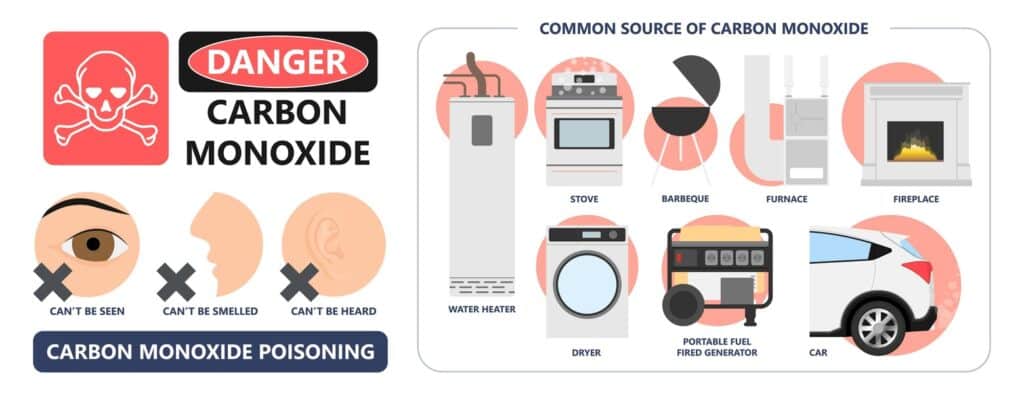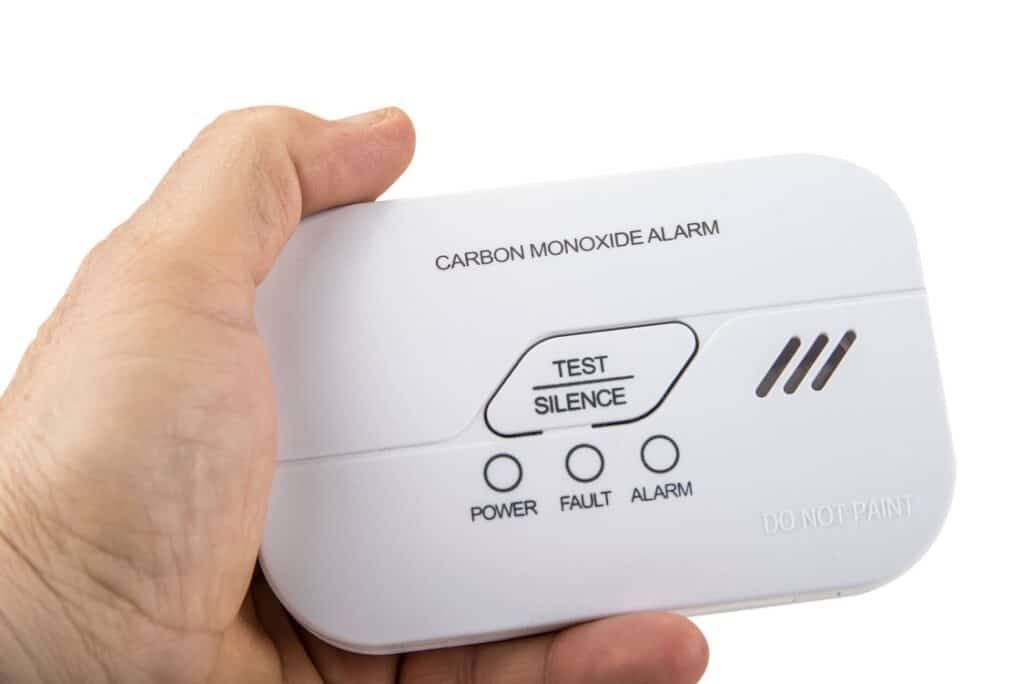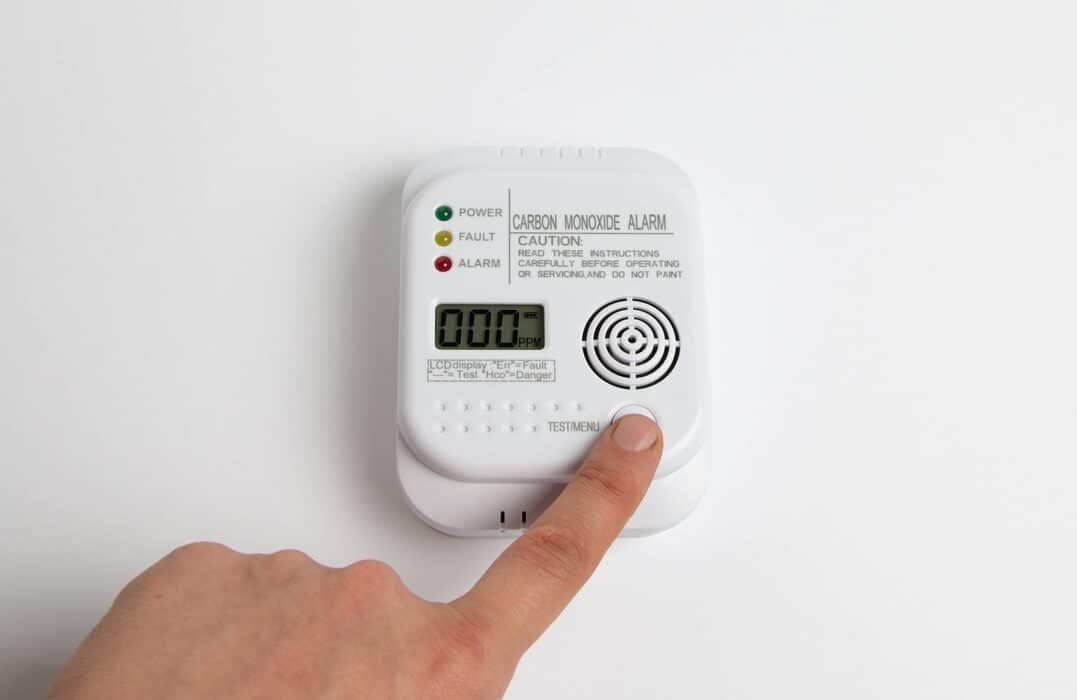Carbon monoxide (CO) is a colorless, odorless, and tasteless gas that can be extremely dangerous to humans and animals when encountered in high concentrations. Due to its undetectable nature, it has been aptly named “the silent killer.” Understanding the risks associated with carbon monoxide exposure is vital for maintaining a safe living and working environment. Let’s learn about carbon monoxide and the dangers, as well as why a detector is important and how to reset a carbon monoxide alarm.
What is Carbon Monoxide?
Carbon monoxide is a byproduct of incomplete combustion of fossil fuels. This can occur in everyday appliances such as gas stoves, heating systems, and vehicles. In properly ventilated areas, CO emissions usually do not pose a significant threat; however, if trapped inside, CO levels can rise quickly and lead to severe health consequences, including death.

What is a Carbon Monoxide Detector?
A carbon monoxide detector is a device that senses the presence of CO gas in the environment. It serves as an early-warning system designed to alert occupants of accumulating CO before it reaches dangerous levels.
Why is a Carbon Monoxide Detector Important?
The primary importance of a carbon monoxide detector lies in its ability to prevent carbon monoxide poisoning, which may otherwise go unnoticed due to the gas’s undetectable properties until symptoms appear — at which point it might be too late to act effectively.
According to the Centers for Disease Control and Prevention (CDC), more than 400 Americans die from unintentional carbon monoxide poisoning not linked to fires each year. Additionally, more than 20,000 emergency room visits and over 4,000 hospitalizations annually are attributed to CO exposure in the United States.
Studies have shown that the installation of carbon monoxide detectors has a significant impact on reducing the number of accidental poisonings. A report by the Journal of the American Medical Association (JAMA) indicates that the use of these detectors could potentially prevent nearly two-thirds of CO-related deaths. The effectiveness of CO detectors is particularly notable in sleeping areas, where individuals are most vulnerable to undetected exposure.
Furthermore, research conducted by the National Fire Protection Association (NFPA) supports the life-saving potential of carbon monoxide alarms, stating that homes with functioning CO detectors had a 93% lower risk of CO-related fatalities compared to homes without them.
How Does a Carbon Monoxide Detector Work?
Carbon monoxide detectors use chemical, electrochemical, or biomimetic sensors to detect changes in the quantity of CO in the air. Advanced models might even include digital readouts that indicate the exact concentration of the gas present.
Carbon Monoxide Detector Beeps – What Does That Mean?
A beep or alarm from a CO detector signifies that the sensor has detected carbon monoxide in the atmosphere at a level higher than what is considered safe. The pattern of beeping can indicate different statuses or alerts.
Carbon Monoxide Detector Beeps Every 30 Seconds
A carbon monoxide detector that beeps intermittently, such as every 30 seconds, generally indicates a low battery or a malfunction within the unit and requires immediate attention.
The Carbon Monoxide Detector Randomly Beeps
Random beeps may suggest a temporary or spurious increase in CO levels, environmental interferences, or a need for maintenance. Investigation and further action such as replacing the detector or identifying sources of CO should follow.

How to Reset Carbon Monoxide Alarm
There are steps to follow to reset the carbon monoxide alarm.
- Silence the alarm if it is sounding by pressing the ‘reset’ button.
- Ventilate the area to help clear any potential CO buildup.
- Check the CO detector for any issues like low battery or malfunction.
- Restore power to the unit, typically by reinserting the battery or plugging it back in.
- Press the ‘test’ button to ensure the unit is operational.
Resetting Versus Testing
Resetting a carbon monoxide alarm clears a current alarm state, while testing ensures that the device is properly functioning. Testing will not affect the detection programming but simply confirms the alarm mechanism is responsive. It’s a good idea to ensure the detector functions correctly so you know that you are keeping your family safe and healthy.
How to Test the Carbon Monoxide Detector
Now that you have reset the carbon monoxide alarm, it is a good idea to test it to make sure it is working properly.
- Ensure the device is on and operational.
- Press and hold the ‘test’ button for a few seconds.
- Listen for the alarm to sound, indicating proper function.
- Release the button and wait for the device to return to monitoring mode.
Maintaining Carbon Monoxide Detector
Regular maintenance, including monthly testing and yearly replacement of batteries (unless it’s a sealed unit), is recommended. Additionally, the entire unit should be replaced every 7-10 years or as per the manufacturer’s instructions.
Carbon Monoxide and Smoke Alarm Information
Now that you know more about carbon monoxide detectors, let’s look at other helpful information. One of those is opening a window to get rid of carbon monoxide poisoning. While opening one window will help to get the carbon monoxide out of the home, it will not be enough. Opening several is needed to get it out of the home and vent the home properly.
Another way to keep safe in the home is to have smoke detectors. You will need to have at least one on every floor, including the basement. Some people prefer to have them in each bedroom or room where the family hangs out. However, it is up to the homeowner.
Lastly, it is important to check the fireplace for carbon monoxide. To do this, you want to make sure that the fireplace is installed correctly and that there is a carbon monoxide detector in place. The fireplace is a lovely addition to a home but you want to make sure that it is not emitting toxins.
When Do I Call a Professional?
Seek professional assistance if the alarm continues to sound after ventilation and reset. Also, if the detector fails during a test. Additionally, if the Installation of new detectors or inspection of potential CO sources is required. This is all something a professional should take care of as it can be dangerous.
Check out the video below about carbon monoxide warnings so you and your family are aware.
Conclusion
Carbon monoxide detectors are crucial safety devices for all indoor environments using combustion-based appliances or systems. Always consult professionals when uncertain about the performance or installation of these devices, to ensure optimal protection against this invisible hazard.
The statistics above underscore the critical role that carbon monoxide detectors play in safeguarding individuals from the silent threat posed by CO exposure. Regular maintenance and adherence to manufacturer guidelines can enhance the protective measures provided by these devices. While you are taking care of the carbon monoxide detector, reach out to Edifice Inspections in Peachtree Corners, GA for a home inspection.


1 Comment
Comments are closed.